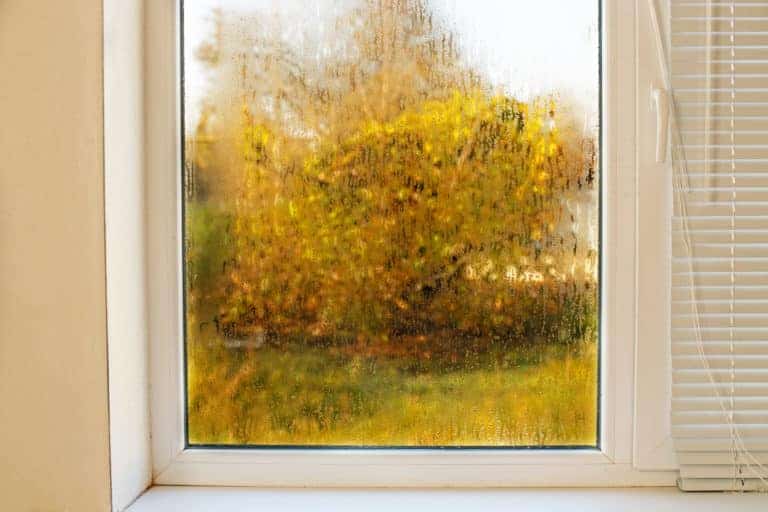As a homeowner, you have dozens of renovation projects on your to-do list. The ones that get your priority to improve your day-to-day life and make sense as long-term investments. If you want to save on energy bills while increasing your home’s curb appeal, there’s no better project than installing energy-efficient windows and doors.
A well-insulated home helps you keep warm on chilly nights and avoid the feeling that you live in a sauna during the summer months. And your doors and windows play a central role in insulation.
In this short guide, we’ll explain the role that doors and windows play in energy efficiency and provide some of our favorite home improvement projects.
How Doors and Windows Affect Your Energy Bills
If you’ve ever cracked or broken a window in your home, you probably felt the effect right away. Whether you could feel a cold breeze blowing into your living room or your bathroom was suddenly as humid as the air outside, your broken window left your home vulnerable to the weather.
If your doors and windows aren’t energy efficient, you’re effectively letting the outside in—and the inside out—all of the time. This can significantly raise your heating and cooling costs.
Conversely, replacing your current windows and exterior doors with energy-efficient alternatives could reduce your bills by up to 15%.
What makes an energy-efficient door or window? All of the following play a role:
- Sealing – Weatherstripping, and caulking keep ambient moisture and humidity out of your home as well as prevent drafts. Both deteriorate over time and eventually require repair or replacement.
- Material – Some doors have foam cores and other added insulation features that can help your home maintain its ideal temperature. And while you may think windows come in one material—glass—the glass treatment and layering can affect its energy efficiency.
- Storm doors and windows – If you have an additional layer of glass in the form of a storm door or window, it can help to overcome any defects in the sealing to improve your home’s efficiency and lower your bills.
To see the most significant savings on your energy bills, focus on improvements in all three areas.
To Replace Or Repair?
Should you repair or replace windows? Do you really need to start from scratch with new windows and doors?
If you haven’t upgraded your exits and windows in decades—or a century!—upgrading to a modern, energy-efficient product could make a significant difference in your monthly utility costs.
But in some cases, you want to preserve your home’s historic charm by keeping the original windows and doors.
In some cases, it’s affordable and straightforward to repair your home while banishing leaks and drafts. Hire an experienced local professional to help diagnose and address the following problems:
- Deteriorating sealing materials – If the only issues are caulking and weatherstripping, you can save on energy bills simply by resealing your windows and doors.
- Rotting wood – Many windows are set in wooden frames, and have additional wooden components. These include the sashes, the parts of the window that move vertically inside the frame, as well as the pieces of wood between individual panes (muntins). If any of these components of your wood windows are rotten, they can let in air and moisture. An experienced glazier may be able to disassemble, repair, and reassemble your windows.
If the cost of a window repair is significantly less than a new window replacement or door replacement, go for it! You can always choose to replace home windows at a later date. But if you’re already dreaming of new windows and lower energy bills, start researching your options for replacement.
Keep in mind that there is no one-size-fits-all solution—the right material for your windows and doors depends on your geographic area.
Choosing The Right Windows for Your Climate
In general, you can look for Energy Star rated products that can help protect your home from the elements (and your wallet from exorbitant energy bills). These products have been tested and certified to ensure energy efficiency.
However, keep in mind that if you have one home in Arizona and another in Maine, you may need different windows for each of the two—and you may need more than one kind of window for just one home!
Which material is right for you?
Consider your climate, and then consult window labels carefully.
- In cold environments, older doors and windows lead to heat loss, which can result in higher heating bills. In this case, the best choices for replacing window glass are double-pane windows and triple-pane windows. For added protection against heat transfer, opt for gas-filled windows with layers of gas between the layers of insulated glass. This provides extra insulation.
- In hot and humid environments, the wrong doors and windows can increase “solar gain,” retaining more of the sun’s heat inside your home and raising your cooling bills. Most windows are rated with a solar heat gain coefficient (SHGC), and low-SHGC windows retain less solar heat.
- You should also consider your potential windows’ “U-factor,” the rate at which the window absorbs non-solar heat. Windows with a low u-factor are ideal for cold environments.
- If you live in an area with a hot summer and cold window, you’ll need a low SHGC and a low U-factor.
- Keep in mind that one household may need several different kinds of windows. For example, you’ll likely want to outfit Southern-facing windows that receive ample sunlight throughout the day with low-SHGC windows. However, the room in a particularly shady corner of your home may stay warmer with a different window pane.
While most windows are rated by SHGC and U-factor, there is at least one more thing that manufacturers don’t account for—leaks. The draftiness of your windows depends on how well they are sealed and installed.
If you’re still puzzled by all of the potential options, consult with a local professional.
Swapping Your Doors
Changing the front door is one of the most popular home renovation projects for quickly changing a house’s look and improving its curb appeal.
It can also reduce your energy bills.
But don’t stop there! To make the biggest impact on your home’s efficiency, replace all your exterior doors.
Like energy-efficient windows, the right door can prevent air leakage, absorb non-solar heat, and deflect or retain solar heat.
Potentially beneficial energy-efficient materials include:
- Fiberglass
- Steel
- Foam core doors
- Energy-efficient glass
Like windows, doors are rated with coefficients that can give you clues about their energy efficiency. These include:
- U-factor
- SHGC
- Air leakage ratings
As with windows, keep in mind that the amount of leakage ultimately depends on how well the door and its frame are installed. You can also add a storm door for additional protection. Look for a door with a low-emissivity glass or glazing. This kind of glass is coated to reduce heat loss by 30-50%.
Call on a local specialist to better understand your home’s energy efficiency.
Many people see significant savings simply by repairing leaking or partially rotted doors and window frames. At The Glass Guru, we specialize in low-cost repair options that may not be available with other service providers.
If you’re ready to give your house a new look as well as a greener footprint, we’ll advise you on the best energy-efficient materials based on the climate, ground cover, and orientation towards the sun. Soon, you’ll enjoy lower energy bills and a whole new appearance thanks to your upgraded doors and windows.
Sources:
Energy Department. Window Types and Technologies.
https://www.energy.gov/energysaver/window-types-and-technologies
Energy Department. Doors.
https://www.energy.gov/energysaver/design/windows-doors-and-skylights/doors
Energy Department. Update or Replace Windows.
https://www.energy.gov/energysaver/design/windows-doors-and-skylights/update-or-replace-windows




